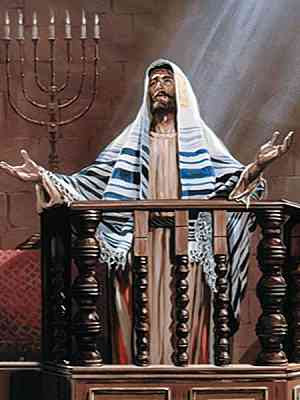Fugitive 6: Jesus Flashes the Feast (Hanukkah)
Jesus Hides Out, but makes a Flash Appearance in the temple at Hanukkah.
A. Where's Waldo-- er, Jesus? After September of AD 29, the activities of Jesus disappear from the Gospels of Matthew and Mark, not to reappear until late winter or early spring of AD 30 (Their last mention of Jesus in AD29 is at Mt 19:1 and Mk 10:1). But Jesus was quite busy. The Gospel of John picks him up at October's Feast of Booths (Tabernacles), while Luke's Gospel picks him up in November for the sending out of the 72 disciples (Jn 7:10, Lk 9:57).
After the feast of Tabernacles in AD 29, Jesus withdrew across the Jordan to Perea, within the realm of Herod Antipas and beyond the reach of the authorities in the Temple. Jesus may have given the parables of the Mustard Seed and the Leaven in Perea (Luke 13:18-21). A likely place for him to stay would have been the city of Amathus, east of the Jordan and a few miles north of Jericho. He could not have been as far away as Capernaum, for reasons which we'll see in part 7 of this series of posts.
B. Jesus Flashes the Temple. After the two parables, just one brief appearance of Jesus is recorded in Judea, during the 8-day Festival of Lights (Hanukkah) which takes place in Jerusalem on December 21-28. The temple grounds are full of people hostile to Jesus for hinting at his own deity. They challenge him to be more clear, and he directly asserts that he is the Son of God. Some intend to throw rocks at him, and others want to seize him, but--yet again--he slips out of their grasp (John 10:22-39).
C. Back to the Wilderness. Jesus crossed the Jordan again, going back to the place where he met his first five disciples back in the Spring of AD 27: Andrew, John, James, Peter, and Nathanael/Bartholomew. There he was revered by those who remembered the teachings of John the Baptist (John 10:40-42).
Jesus will make one final visit to Judea (but not to the temple) before his triumphal return on the back of a donkey. Watch for that here next week.




